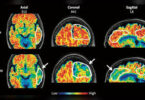F.P. Report
ISLAMABAD: A new study conducted by UC Davis Comprehensive Cancer Centre shows that current smokers have a 12% increased risk of a laboratory-confirmed viral infection and a 48% increased risk of being diagnosed with respiratory illnesses.
These results did not vary by type of virus, including the Coronavirus. In combination with the past findings, the current findings published in the Nicotine and Tobacco Research journal support urgent recommendations to increase tobacco control efforts for countering COVID-19.
“Past research has shown that smoking increases the risk of COVID-19 disease severity, but the risk of infection had been less clear,” said UC Davis tobacco researcher and lead author of the study, Melanie Dove. “Our study findings show smokers have an increased risk of viral infection, including Coronavirus and respiratory illness.”
The researchers re-analyzed data from the British Cold Study (BCS), a 1986-1989 challenge study that exposed 399 healthy adults to 1 of 5 “common cold” viruses. This included a type of common coronavirus (coronavirus 229E) that existed prior to the novel coronavirus (SARS-CoV-2 virus), which causes COVID-19 disease.
The UC Davis researchers calculated overall and coronavirus-specific unadjusted and adjusted relative risks for current smokers and each outcome (infection and illness), testing whether each association was modified by type of respiratory virus, the Medical Xpress reported .
The data showed that current smokers had an increased risk of respiratory viral infection and illness, with no significant difference across the types of virus.
The increased associations for only the Coronavirus 229E did not reach statistical significance. This was likely due to the small sample size of only 55 participants, out of them 20 were smokers.
These findings are consistent with known harms caused by smoking to immune and respiratory defenses and some observational evidence of increased COVID-19 infection and disease progression in current smokers.
“Besides examining associations by type of virus, a key reason we re-analyzed the original British Cold Study is to report a risk ratio instead of an odds ratio,” Dove explained.
“Odds ratios may overestimate the strength of an association if an event is not rare (>10%), so our results are a little lower (1.48 compared with 2.1 in the BCS). The relative risks from this study can provide an estimate of the strength of associations that can be used to guide tobacco control decisions,” he added.
“These findings may have implications for addressing tobacco use at the population level as a strategy for preventing COVID-19 infection,” said Elisa Tong, senior author and professor at UC Davis Department of Internal Medicine.
“A quarter of the US population currently smokes or has high levels of cotinine, a nicotine metabolite, and there is no safe level of smoke exposure for nonsmokers. Global tobacco control is urgently important too, as many countries have even higher smoking prevalence rates,” Elisa added. (APP)






